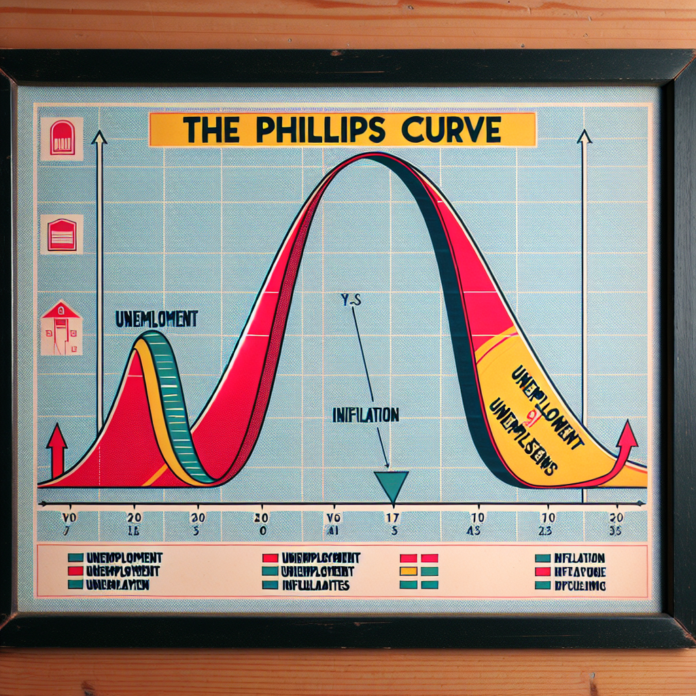Introduction:
The relationship between inflation and unemployment has been a subject of great interest and debate among economists. The Phillips Curve is an economic concept that highlights the inverse relationship between inflation and unemployment rates. Understanding this relationship can provide valuable insights into the dynamics of an economy. In this article, we will explore the Phillips Curve and provide links to companies that offer insights and resources to further delve into this topic.
- Explaining the Phillips Curve:
The Phillips Curve, named after economist A.W. Phillips, suggests that there is an inverse relationship between inflation and unemployment rates. According to this theory, when the unemployment rate is low, inflation tends to be higher, and vice versa. The curve implies that policymakers face a trade-off—attempting to reduce unemployment could lead to higher inflation, and controlling inflation might cause an increase in unemployment. Consider the following resources for a comprehensive understanding:
- Khan Academy: Khan Academy offers a series of videos explaining the Phillips Curve and its implications. These videos provide a clear and accessible introduction to the concept for individuals seeking to grasp the relationship between inflation and unemployment.
Website: www.khanacademy.org
- Federal Reserve Bank of St. Louis: The Federal Reserve Bank of St. Louis provides articles, research papers, and data sets exploring the Phillips Curve and its historical applications. These resources offer a deeper understanding of the concept and its relevance in economic policy.
Website: www.stlouisfed.org
- Criticisms and Challenges to the Phillips Curve:
While the Phillips Curve has been a valuable framework for understanding the relationship between inflation and unemployment, it has also faced criticism and challenges. Some argue that the relationship is not always consistent or predictable, and other factors, such as supply shocks and expectations, can significantly influence inflation and unemployment dynamics. Exploring the criticisms and challenges to the Phillips Curve can provide a balanced perspective on its limitations. Consider exploring the following resource:
- The Economist: The Economist provides articles and analysis on the limitations and criticisms of the Phillips Curve. Their insights contribute to a comprehensive understanding of the concept and highlight its shortcomings in capturing all aspects of the inflation and unemployment relationship.
Website: www.economist.com
- Brookings Institution: The Brookings Institution offers research papers and articles that examine the limitations of the Phillips Curve and explore alternative approaches to understanding the relationship between inflation and unemployment. Their insights contribute to a broader understanding of the topic.
Website: www.brookings.edu
- Policy Implications and Relevance:
Understanding the dynamics between inflation and unemployment is crucial for policymakers as they make decisions to stabilize the economy. The Phillips Curve has historically influenced central banks’ monetary policies and fiscal measures. Analyzing the policy implications and relevance of the Phillips Curve can provide insights into economic decision-making. Consider the following resource:
- The Federal Reserve: The Federal Reserve provides information on how the Phillips Curve influences monetary policy decisions in the United States. Their website offers insights into how the central bank considers the relationship between inflation and unemployment when formulating policies.
Website: www.federalreserve.gov
Conclusion:
The Phillips Curve highlights the relationship between inflation and unemployment rates, providing a framework for understanding how changes in one variable can impact the other. Resources such as Khan Academy and the Federal Reserve Bank of St. Louis offer comprehensive explanations and insights into the Phillips Curve and its implications. Exploring criticisms and challenges, as provided by The Economist and the Brookings Institution, can contribute to a balanced understanding of this economic concept. Additionally, understanding the policy implications of the Phillips Curve, as explained by the Federal Reserve, can shed light on how policymakers utilize this framework in decision-making processes.
Disclaimer: The external links provided in this article are for reference purposes only, and their inclusion does not signify endorsement or affiliation with the companies mentioned. Always exercise caution when visiting external websites and consult with reputable economists for personalized advice on economic topics related to inflation and unemployment.




 AGF-B.CO
AGF-B.CO